Test Drive of the New Supra (6MT)|How Did a Porsche Owner Feel?
公開日:
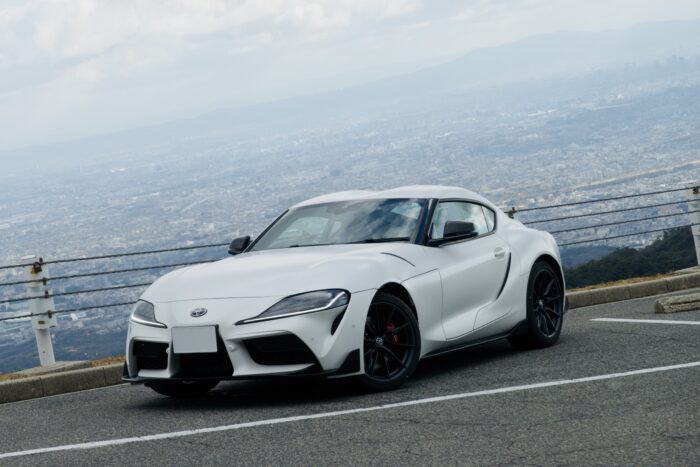
コンテンツ
Toyota Supra
When I think of the Supra, the A80 model (1993-2002) — the ’80s Supra immediately comes to mind. Its larger body and drastically changed design from the previous generation divided opinions, but I really liked it. I especially admired the rear styling, the taillight design, and the enveloping driver’s seat.

A catalog of the ’80s Supra from back then. I still treasure it today.
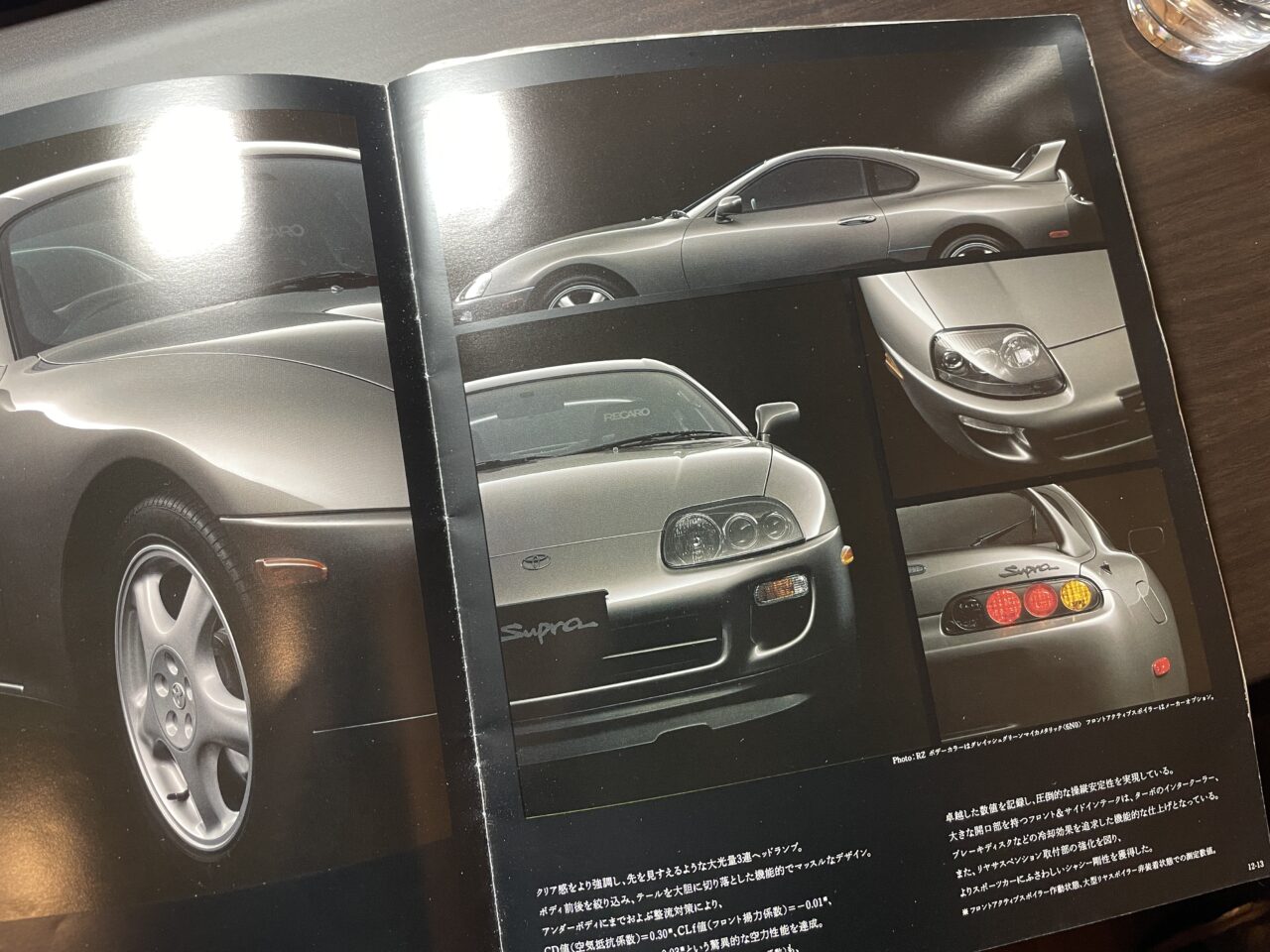
I absolutely loved this design.
That Supra was redesigned in 2019. When I first saw the design in the announcement, I was disappointed, and I was surprised that although it was a joint development with BMW, it shared a platform with the Z4 and was actually built by BMW.
This time, I had the opportunity to test drive that Supra. The grade was the limited edition RZ “Matte White Edition,” limited to just 50 units. The transmission is a newly introduced manual transmission (MT), which the original BMW Z4 does not have.
Getting Started
Let me be clear from the start: I had zero expectations for this Supra.
Even though it’s BMW-made, I imagined a Toyota-influenced sports car that might feel somewhat unreliable in terms of driving. The original Z4 is a great car, but it’s a bit too luxurious for the kind of sports car I’m looking for.
Also, most reviews by critics of the new Supra were lukewarm, so I imagined it might be a somewhat mediocre car.
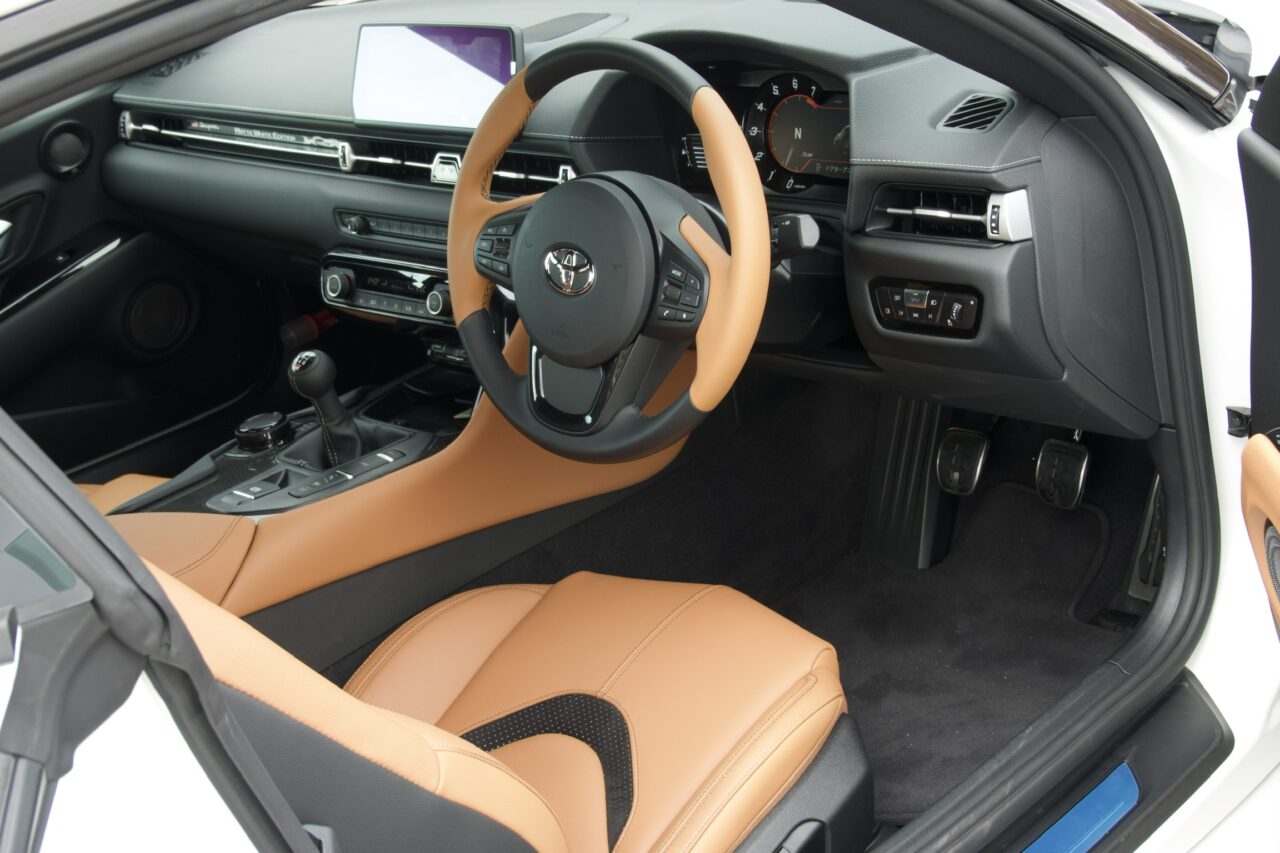
However, the moment I sat in the driver’s seat, started the engine, engaged the clutch, and began driving, I understood.
Yes, it was one of those “cars where you can tell the difference in 2 seconds,” as my wife and I often say on this blog.
From the initial rolling feel of the tires, the low friction in the range of motion, and the smoothness of the drivetrain parts, you can tell the manufacturing precision is very high. The tire contact feel and suppression of subtle vibrations are also excellent.
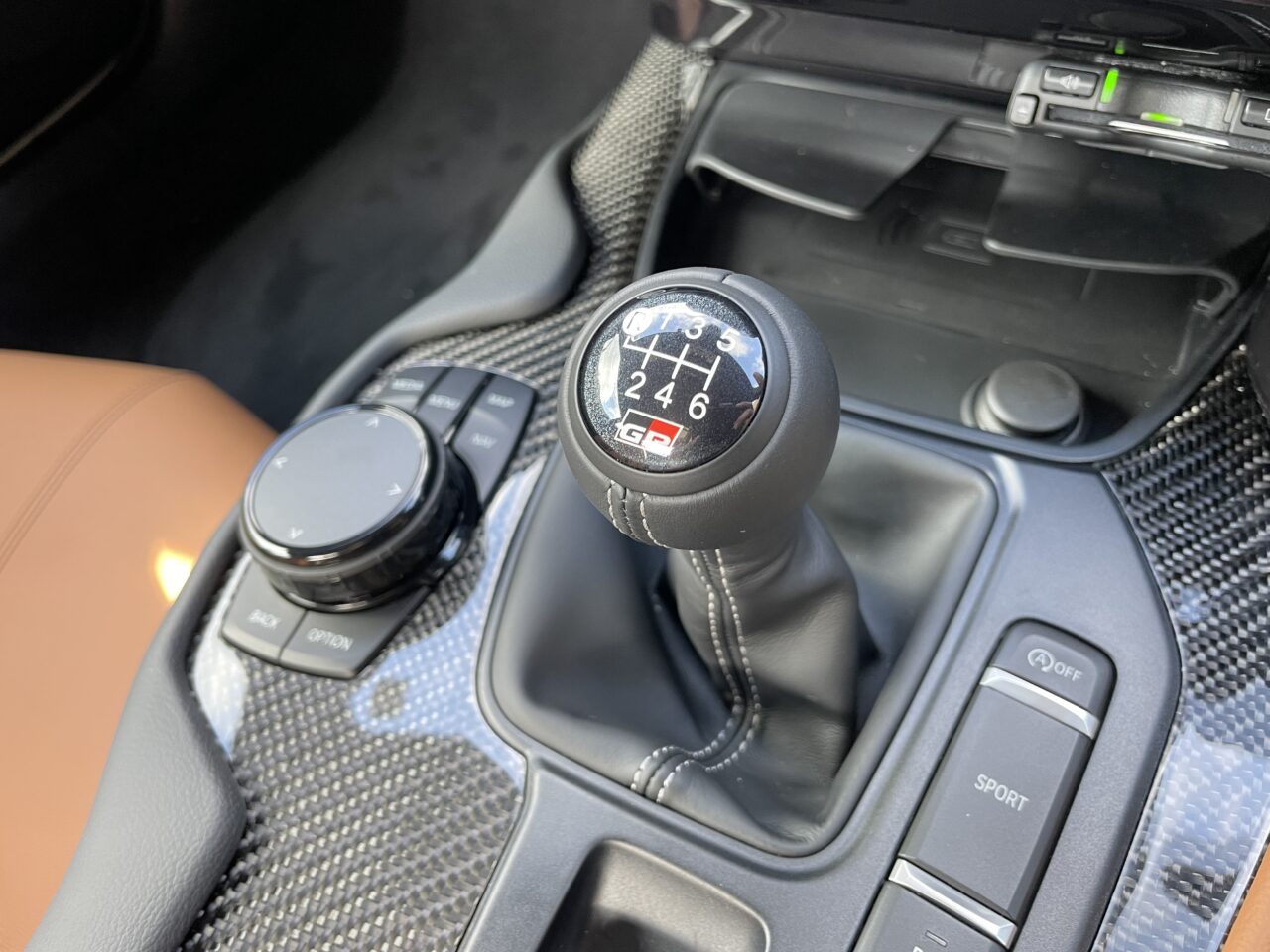
Thinking, “This might be promising,” I left the parking lot and accelerated through 2nd and 3rd gears.
The feeling of the newly developed 6-speed manual transmission, said to be developed under Toyota’s leadership, is exceptionally good. The operation feels a bit firm and requires some force, but the engagement is precise and very satisfying. The clutch is very light, and it automatically raises the revs slightly when starting in 1st gear, making it easy even for manual beginners.
Also, being a recent MT, it features auto-blip, allowing very easy and sporty operation.
Wonderful Suspension
The ride comfort is excellent even at low speeds. The seats are soft and designed to let you sink in deeply, and this seating comfort is very good. The seat adjustment buttons are the same shape as BMW’s, so I believe these are BMW seats, but the hold is just right, and unnecessary vibrations are well absorbed.
On top of that, the suspension movement is outstanding. It settles any vibration instantly, with virtually no residual shaking. Honestly, this is a level of refinement rarely experienced with stock suspension on Japanese cars.
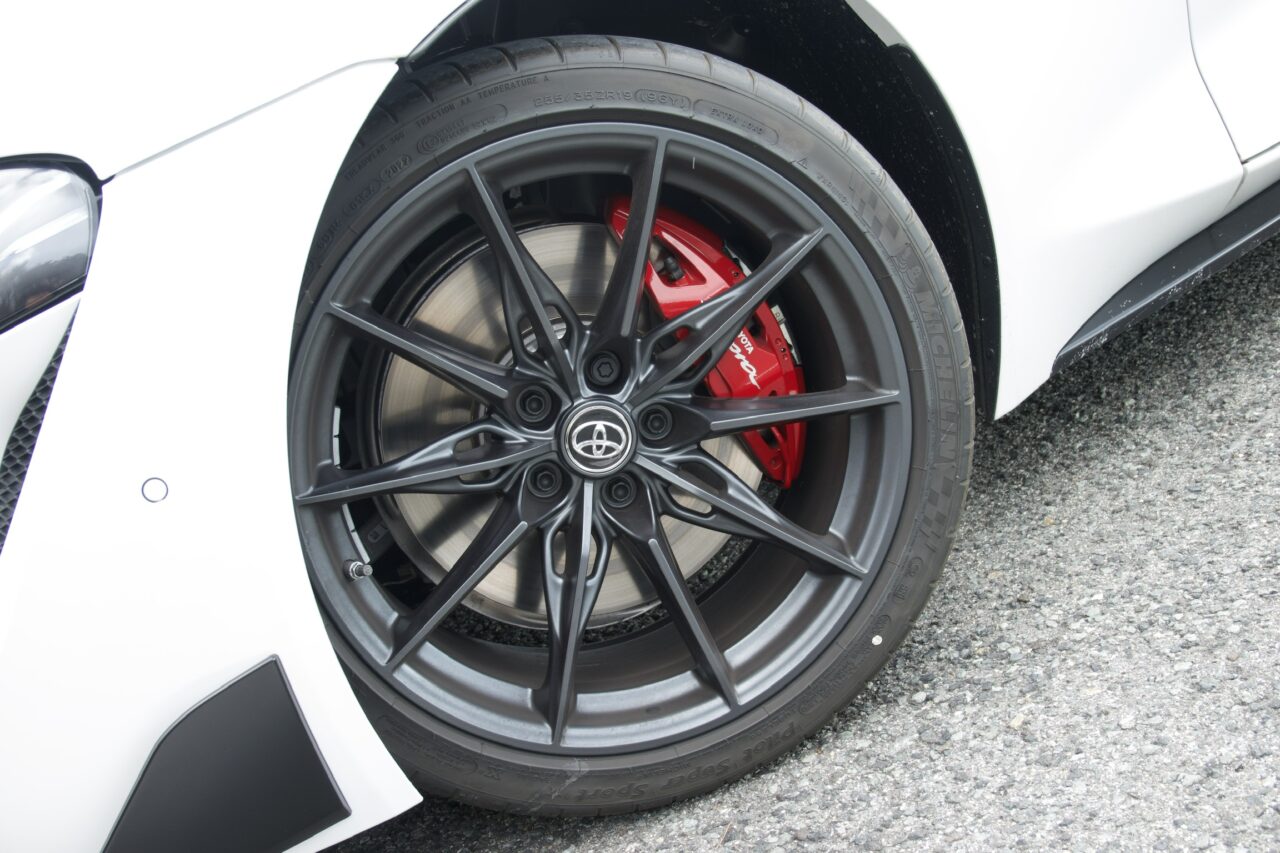
Entering a curve and turning the steering wheel, the response is superb. It reacts vividly from the very start of the steering input, with minimal lag. Later, when parking, I noticed the Supra’s lock-to-lock steering is just under two full turns.
This is on par with cars like the Ferrari 488 GTB and is rare for sports cars in this price range.
Moreover, unlike some supercars that simply reduce lock-to-lock to boost response blindly, this Supra’s response is sharp yet feels natural to the driver. It neither oversteers nor understeers unexpectedly, allowing very confident driving.
This tuning is hard to believe for a car priced around 8 million yen. The only comparable cars I can think of in this class are the Cayman and Boxster.
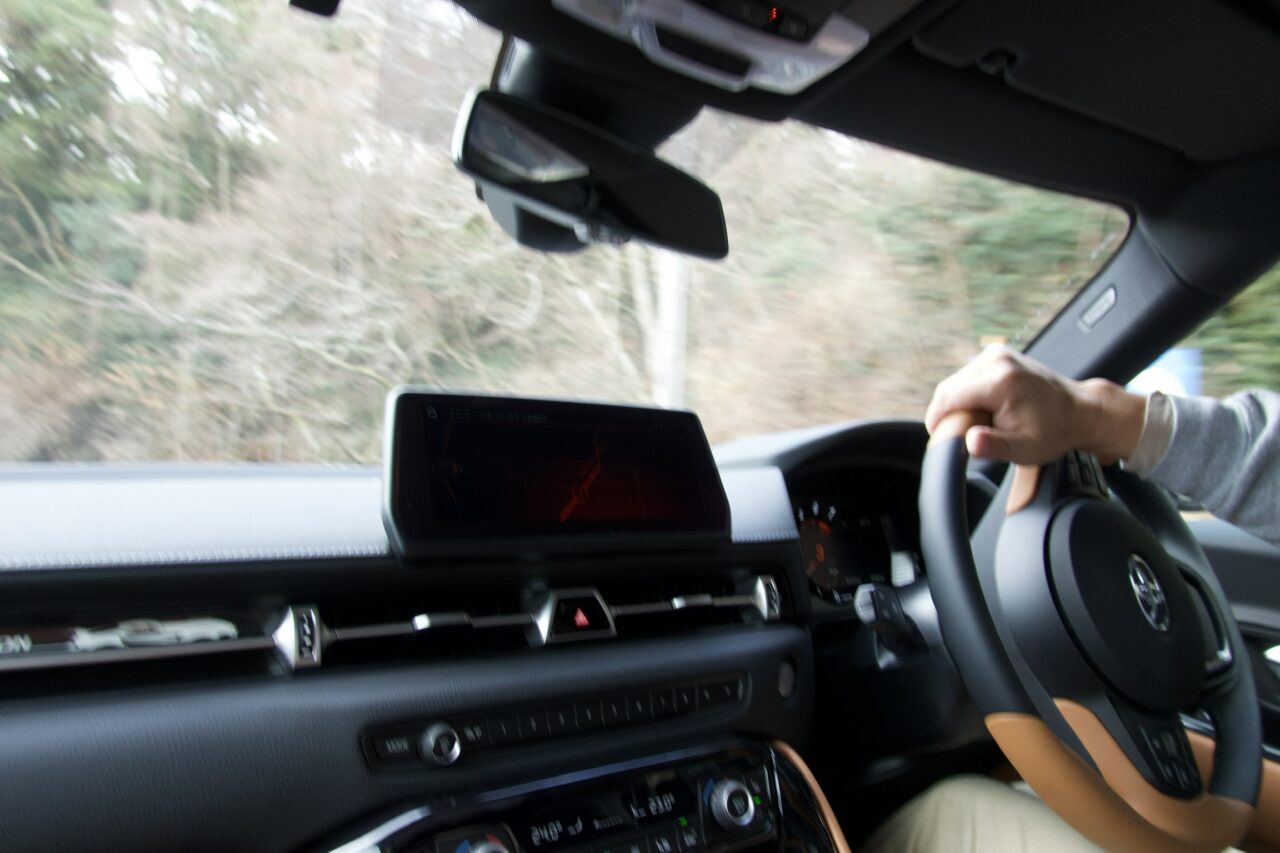

The seating comfort is really good.
This sharp response and the suspension’s road-holding during cornering are truly remarkable. Despite the comfortable ride, there’s no strange body roll, and the car sticks to curves tenaciously, smoothly powering through bends. This is truly BMW’s “joy of driving.” Or maybe even more than that.
If I were to compare the suspension feel on light mountain road runs to a Porsche, it’s closer to the 992 coupe than the 981 or 718 Cayman/Boxster. To be precise, it doesn’t quite reach the 992’s level, but the ride is comfortable, the steering is sharp, and it holds the road well during cornering. The sensation is very similar.
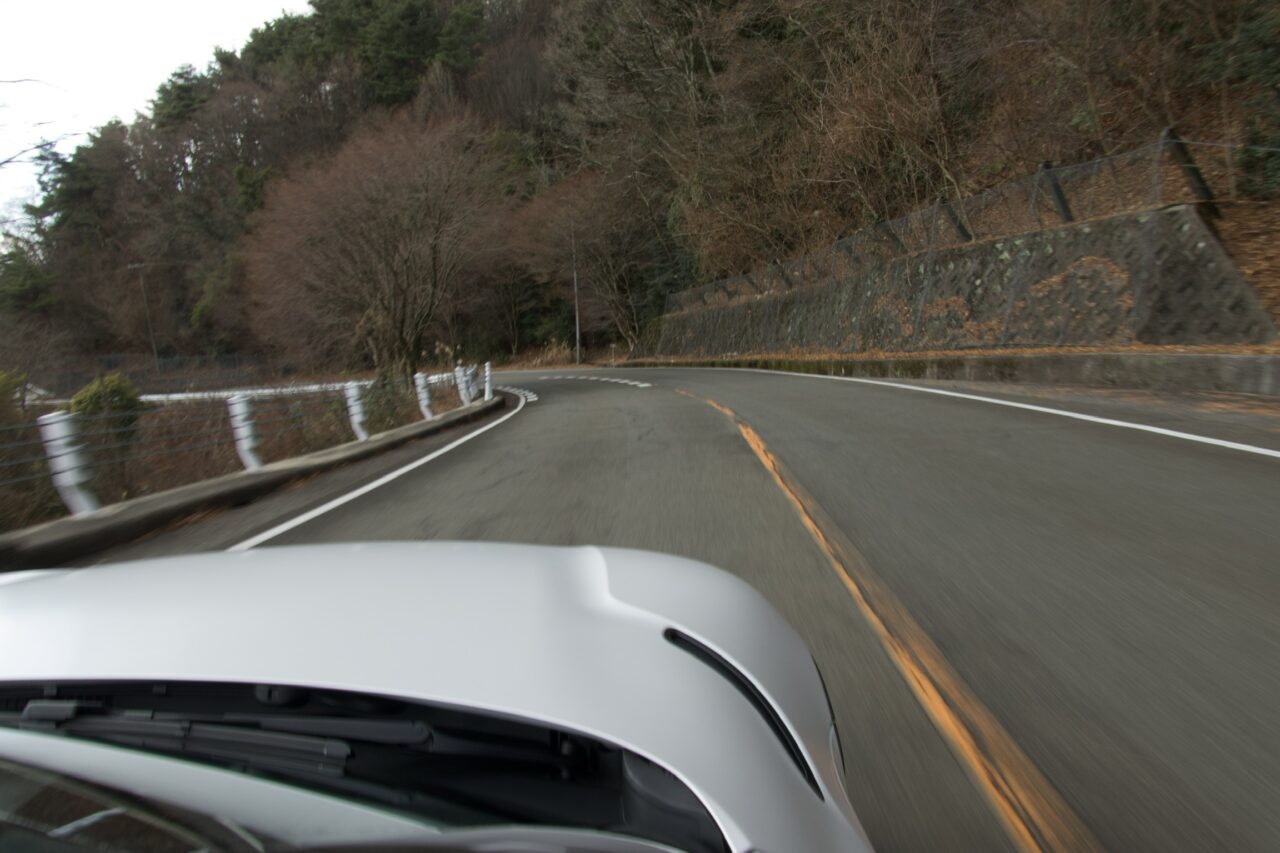
According to the owner, the Supra’s chassis and suspension have been updated through yearly improvements. Upon checking the materials later, I found:
- AVS control and absorber damping tuning improved roll balance and ride comfort
- Stabilizer bush characteristics changed to improve initial steering response
- Chassis control systems (AVS, EPS, VSC) revised to enhance steering feel and control at the limit
So it might be quite different from the initial production batch.
Engine Feel
Since the engine was still in break-in, I didn’t test high revs, but the throttle response was sharp enough, and the 387 hp power is ample. Most notably, it’s a turbo engine that doesn’t feel like a turbo. There’s no sudden surge in torque. If you didn’t know, you might mistake it for a large-displacement naturally aspirated engine.

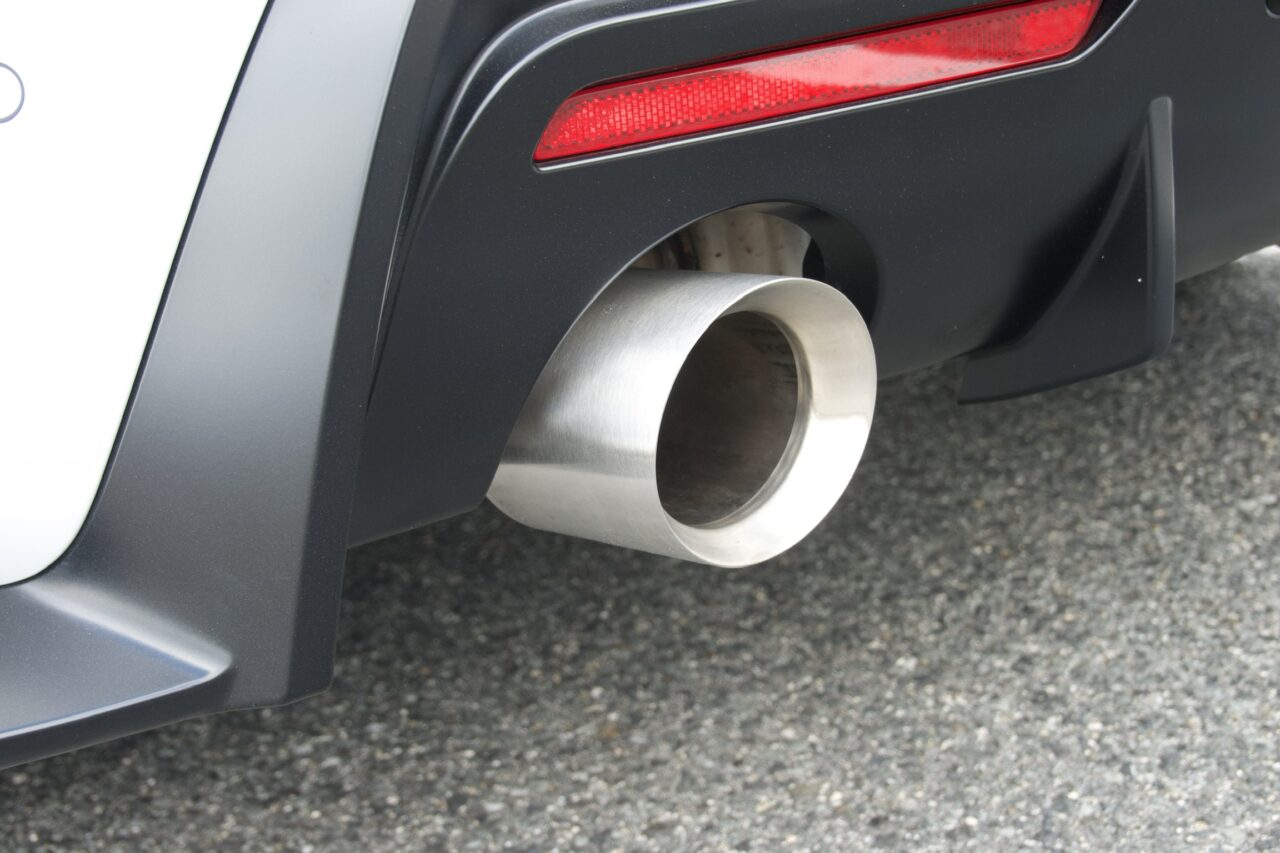
The torque increases proportionally with engine speed, a hallmark of BMW engines. This is the same feeling I experienced with the 3.0-liter turbo engines in the Z4 and 4 Series.
One point of concern is the engine and exhaust sound. It has a somewhat muffled tone. It’s not unpleasant, but given how enjoyable the engine is, I wish it had a clearer sound.
Still, with such excellent suspension and engine feel, you’ll likely forget about that while driving.
Overall Impression
By now, this has become a glowing review, but it’s an honest one with no bias.
Incidentally, on the day, besides me and the Supra’s owner (a Porsche owner), two other Porsche owners (owners of a 718 Spyder and a 991 GT3 RS) also test drove the Supra, and both highly praised the suspension, even joking that they wanted one themselves. I, too, find myself wanting to buy this Supra.
Though I’m realistically waiting for delivery of a new Fairlady Z, that’s how much I fell for this car.
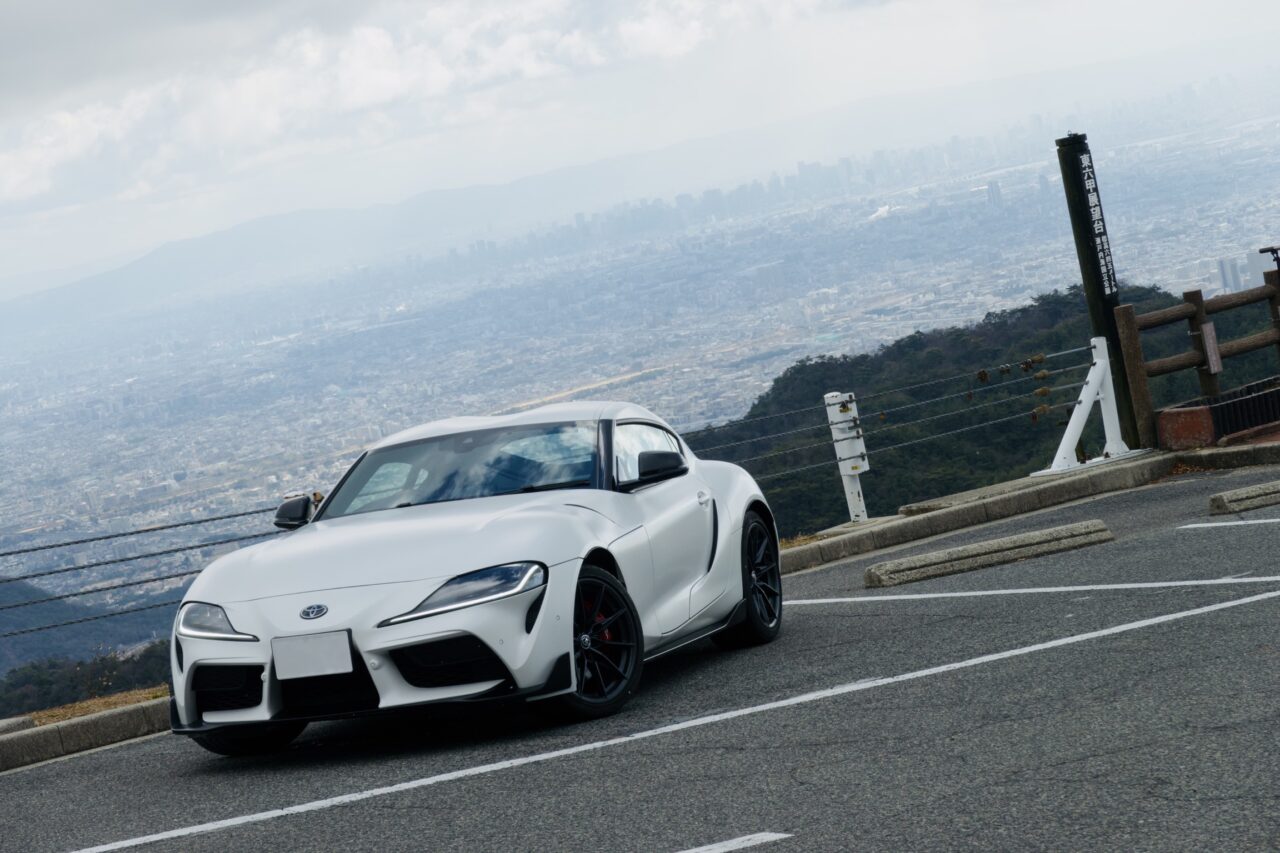
It looks even better in person than in photos. The matte white is truly beautiful.
I think the best use for this car is mainly as a GT car, while also enjoying it on mountain roads and winding routes. For circuit use, the Cayman might be better suited, but its athleticism is more than enough.
Its comfort level is very high, so it’s perfectly usable as a date car, for daily shopping, or commuting. I think its comfort even surpasses the Cayman’s. By the way, to get similar comfort in a 718 Cayman, PASM is essential. You’d have to compare it to a GTS 4.0 grade to approach this level of comfort.
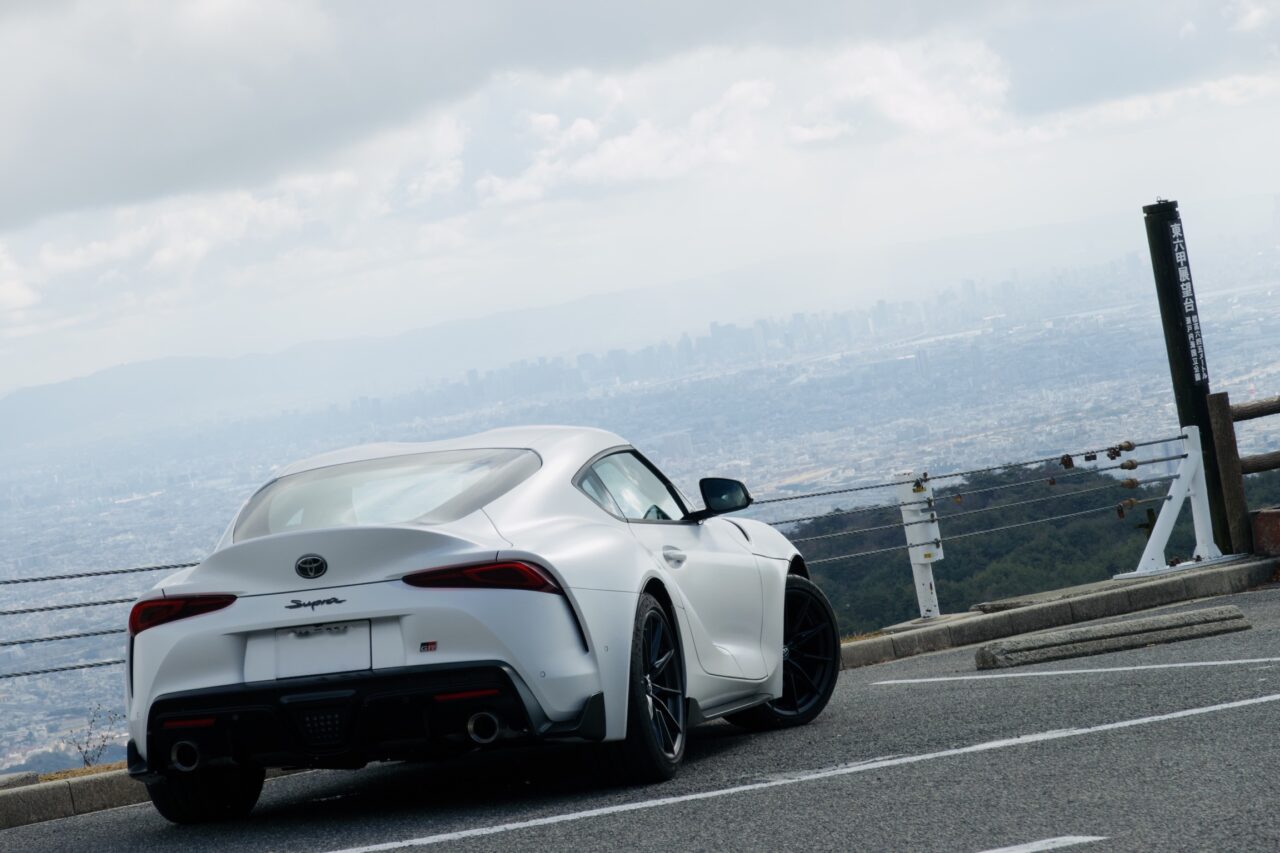
It’s truly a well-balanced car. Since it’s a Japanese car, many will probably customize it eventually, but personally, I hope people drive it as is without modifications. Don’t change the wheels or even the tire brand. While some performance aspects might improve with customization, this balance will definitely be lost. Such a well-balanced car is rare.
This isn’t something any ordinary tuning shop can achieve by piecing together third-party parts. So if possible, I sincerely hope you’ll enjoy it just as it is.
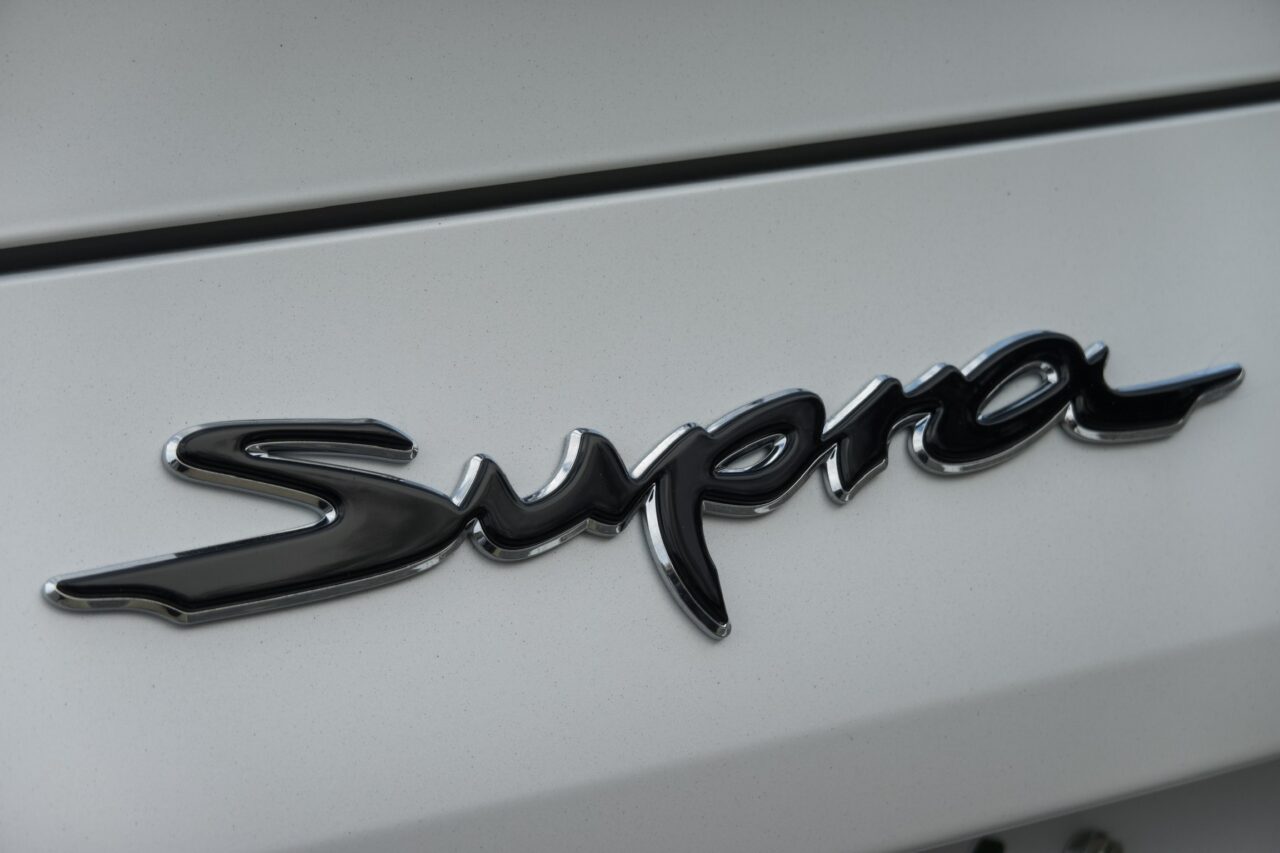
Although it carries the Toyota name, this isn’t the driving feel of any Toyota car I know. But it’s not a pure BMW either. It feels different from the Z4 and the 440i as well. I believe this is a “BMW vehicle tuned by Toyota (GR).” If I were to put it in Porsche-style naming, it would be the “BMW Z4 Coupe GR Package.” That’s the image I want you to have.
このブログが気に入ったらフォローしてね!


Comment ( 0 )
Trackbacks are closed.
No comments yet.